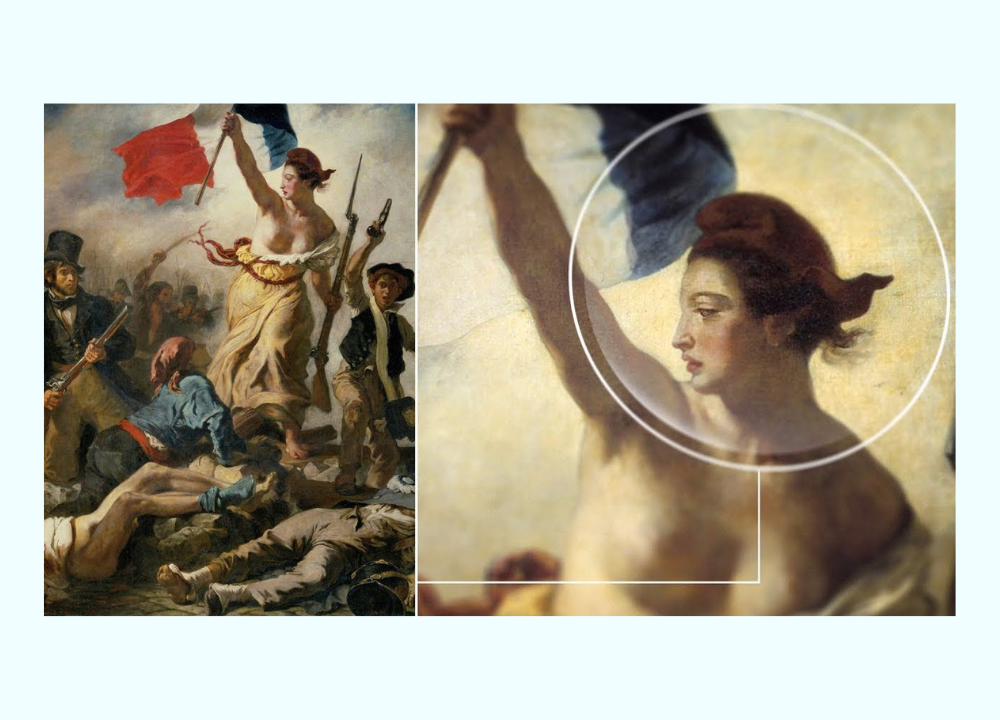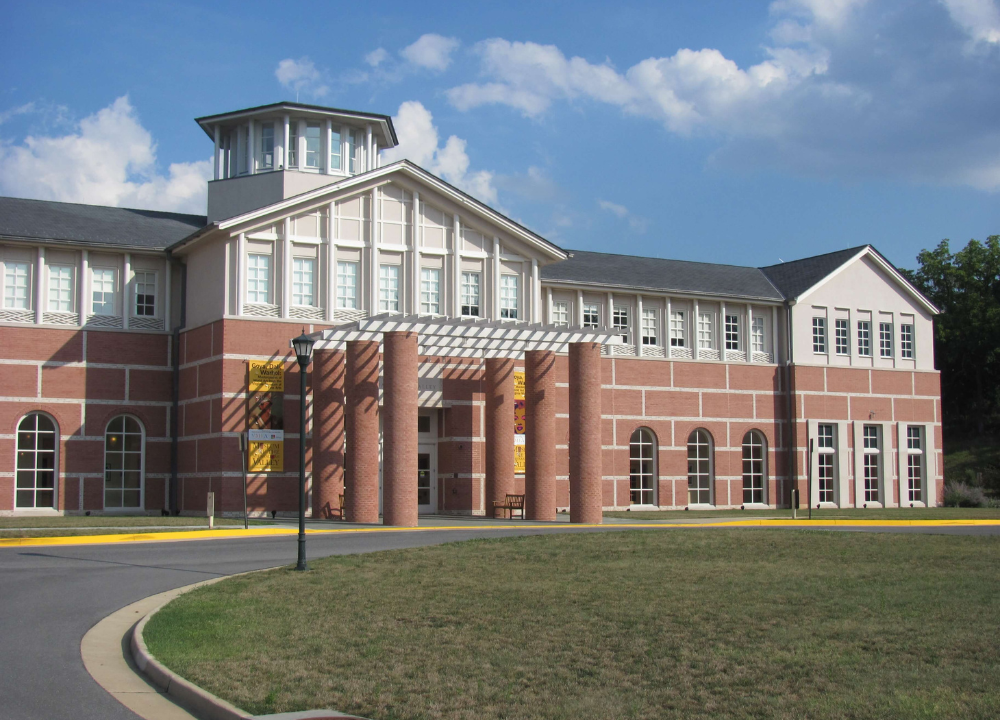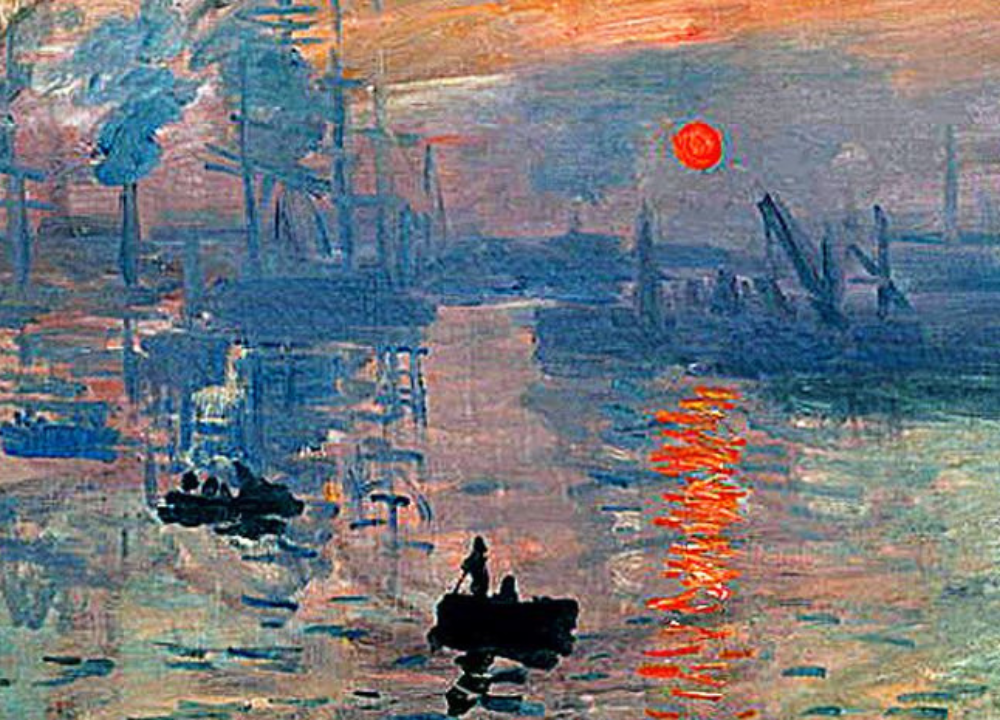“Liberty Leading the People” by Eugène Delacroix is a powerful depiction of the 1830 French Revolution. The painting symbolizes freedom and resistance.
Eugène Delacroix’s “Liberty Leading the People” is an iconic masterpiece that captures the spirit of the 1830 French Revolution. The painting features a female figure, representing Liberty, leading a diverse group of revolutionaries. Delacroix masterfully combines realism with romanticism, bringing the tumultuous scene to life.
The artwork not only reflects the socio-political climate of the time but also serves as a universal symbol of freedom and resistance. It remains one of the most celebrated pieces in art history, inspiring countless viewers with its emotional intensity and symbolic depth. The painting’s rich imagery and historical significance make it a timeless testament to the human struggle for liberty.
The Life Of Eugène Delacroix
Eugène Delacroix was a French Romantic artist, famous for his powerful and expressive paintings. His most renowned work, ‘Liberty Leading the People’, captures the spirit of the French Revolution. This blog post explores the life of Eugène Delacroix, shedding light on his early years, the influence of Romanticism on his art, and his political engagement.
Early Years
Eugène Delacroix was born on April 26, 1798, in Charenton-Saint-Maurice, France. His family had a notable background, with his father serving as a prominent politician. Delacroix’s early life was marked by a passion for art and literature.
- 1798: Born in Charenton-Saint-Maurice.
- 1815: Enrolled in the Lycée Louis-le-Grand in Paris.
- 1816: Began studying under painter Pierre-Narcisse Guérin.
Delacroix’s education exposed him to classical art forms, but he soon developed a unique style. His early works were characterized by bold colors and dramatic compositions. These elements would later define his career.
| Year | Event |
|---|---|
| 1798 | Born in Charenton-Saint-Maurice. |
| 1815 | Enrolled in Lycée Louis-le-Grand. |
| 1816 | Studied under Guérin. |
Influence Of Romanticism
Romanticism greatly influenced Delacroix’s art. This movement emphasized emotion, individualism, and nature. Delacroix’s works often depicted dramatic scenes with intense emotions.
Key Characteristics of Delacroix’s Romanticism:
- Vivid Colors: Used to convey emotions.
- Dynamic Composition: Created a sense of movement.
- Historical Themes: Focused on significant events.
Delacroix admired the works of Lord Byron and William Shakespeare. Their writings inspired his dramatic and emotional style. He sought to evoke deep feelings in the viewer, making his art stand out.
Some of his famous Romantic works include:
- ‘The Death of Sardanapalus’
- ‘The Massacre at Chios’
- ‘Liberty Leading the People’
Political Engagement
Delacroix’s political engagement was evident in his art. He was deeply affected by the political turmoil of his time. His works often reflected his views on liberty and justice.
Key Political Events Influencing Delacroix:
- French Revolution of 1830: Inspired ‘Liberty Leading the People’.
- Greek War of Independence: Depicted in ‘The Massacre at Chios’.
- July Revolution: Expressed the fight for freedom.
‘Liberty Leading the People’ remains a powerful symbol of freedom. It portrays a woman leading a diverse group of revolutionaries. This painting captures the essence of Delacroix’s political beliefs.
Delacroix’s art went beyond mere aesthetics. It was a statement of his ideals. His political engagement made his work resonate with many. Delacroix’s legacy continues to inspire those who value freedom and justice.
The Creation Of ‘liberty Leading The People’
The creation of ‘Liberty Leading the People’ by Eugène Delacroix stands as a monumental piece in art history. Painted in 1830, this masterpiece captures the spirit of the French Revolution. Delacroix masterfully combines vivid imagery with deep symbolism to convey the fervor and chaos of the time. This blog post will delve into the inspiration, symbolism, and challenges faced during the creation of this iconic artwork.
Inspiration And Motivation
Delacroix was profoundly inspired by the July Revolution of 1830. The revolution saw the overthrow of King Charles X. The artist was motivated by the dramatic events on the streets of Paris. He wanted to capture the essence of the uprising.
Key inspirations:
- The struggle for freedom and democracy
- The heroism of the common people
- The visual chaos and energy of the revolution
Delacroix aimed to create a visual representation of liberty. He wanted it to be powerful and moving. His motivation was not just political but also personal. The artist felt a deep connection to the cause of liberty.
Noteworthy motivations:
- Personal belief in freedom and justice
- Desire to create a lasting impact through art
- Passion for capturing historical moments
Symbolism And Imagery
‘Liberty Leading the People’ is rich with symbolism. The central figure of Liberty is a woman. She represents the personification of freedom. She holds the tricolor flag, symbolizing the revolution.
Key symbols in the painting:
| Symbol | Meaning |
|---|---|
| Tricolor Flag | Unity and Revolution |
| Phrygian Cap | Freedom and the common people |
| Rubble and Dead Bodies | Chaos and Sacrifice |
The painting also includes a diverse group of people. This diversity represents the unity of different social classes. Everyone is fighting for the same cause. Delacroix uses vivid colors and dramatic lighting. This enhances the emotional impact of the scene.
Important imagery:
- Diverse group of fighters
- Emotional expressions and dynamic poses
- Contrast of light and shadow
Challenges And Controversies
Creating ‘Liberty Leading the People’ was not without challenges. Delacroix faced criticism from various quarters. Some people found the painting too violent. Others thought it was too political.
Main challenges:
- Balancing artistic expression with political commentary
- Depicting violence without glorifying it
- Overcoming initial public and critical reception
Controversies also surrounded the painting. Some critics accused Delacroix of romanticizing the revolution. They felt he was too sympathetic to the rebels. Despite this, the painting gained immense popularity.
Noteworthy controversies:
- Accusations of romanticizing violence
- Debate over the depiction of the common people
- Criticism from political factions
Delacroix’s masterpiece remains a powerful symbol of revolution and freedom. It continues to inspire and provoke thought, reflecting the complex nature of historical events.

Analysis Of ‘liberty Leading The People’
Revolution on Canvas: Eugène Delacroix ‘Liberty Leading the People’ is a masterpiece that has captivated audiences since its creation in 1830. This painting is a powerful symbol of freedom and revolution. Analyzing ‘Liberty Leading the People’ reveals the depth of Delacroix’s talent and his ability to capture the spirit of an era.
Composition And Techniques
Delacroix masterfully uses composition and techniques to create a dynamic scene. The painting is divided into three main areas:
- Foreground: Where the action happens.
- Middle ground: Where Liberty stands tall.
- Background: Shows the city in turmoil.
The artist uses a triangular composition with Liberty at the apex. This draws the viewer’s eyes to her. Diagonal lines create a sense of movement and chaos. The use of light and shadow adds depth and drama.
Delacroix employs bold brushstrokes and vivid colors to convey emotion. The reds, blues, and whites echo the French flag, reinforcing the revolutionary theme. The texture of the paint adds to the raw energy of the scene.
A table summarizing the key techniques used:
| Technique | Description |
|---|---|
| Brushstrokes | Bold and expressive |
| Colors | Vivid and symbolic |
| Composition | Triangular, guiding the eye |
| Light and Shadow | Creates depth and drama |
Depiction Of Liberty
Liberty in the painting is not just a symbol. She is a powerful figure leading the charge. Delacroix portrays her as a strong, determined woman. She is both an allegorical figure and a real person.
Her attire is symbolic. She wears a Phrygian cap, a symbol of freedom. Her dress is flowing, suggesting movement and energy. She carries a bayonet in one hand and the French flag in the other.
Liberty’s face is determined and fierce. She looks ahead, leading the people with confidence. Her bare chest symbolizes bravery and the nurturing of the nation.
Liberty stands on a pile of debris, symbolizing the chaos of revolution. She is the beacon of hope amid the turmoil. The light falls on her, highlighting her importance in the composition.
Key elements of Liberty’s depiction:
- Phrygian cap: Symbol of freedom
- Bayonet and flag: Symbols of revolution
- Determined expression: Leadership and resolve
- Flowing dress: Movement and energy
Representation Of The People
The people in the painting represent different social classes and backgrounds. Delacroix includes them to show unity in the revolution. Each figure has a distinct identity, contributing to the collective struggle.
In the foreground, a young boy with pistols symbolizes youthful bravery. He represents the future generation fighting for freedom. Next to him, a worker with a saber shows the involvement of the working class.
A man in a top hat stands behind Liberty. He signifies the intellectuals and the bourgeoisie supporting the revolution. His presence indicates that the fight for liberty transcends social boundaries.
The fallen bodies in the foreground serve as a stark reminder of the cost of revolution. They add a somber tone to the otherwise energetic scene.
Impact And Reception
‘Liberty Leading the People’ by Eugène Delacroix remains one of the most iconic paintings of the 19th century. This masterpiece captures the essence of the July Revolution of 1830 in France. Its impact and reception have shaped art history and continue to inspire generations.
Immediate Reaction
Upon its debut, ‘Liberty Leading the People’ evoked strong emotions. The painting was first exhibited at the Salon of 1831 in Paris. It received mixed reviews from the public and critics alike.
Many praised Delacroix for his bold use of color and dynamic composition. They admired the way he depicted the spirit of revolution. The painting’s central figure, a personification of Liberty, captivated viewers.
- Royalists criticized the painting for glorifying rebellion.
- Revolutionaries saw it as a powerful symbol of freedom.
- Some felt it was too violent and chaotic.
Despite the controversy, the painting was purchased by the French government. It was initially displayed in the Musée du Luxembourg. However, due to its politically charged nature, it was soon removed and hidden away.
In 1848, during another period of political upheaval, the painting resurfaced. It was exhibited again and received renewed attention. This time, it was embraced more warmly by the public. Today, it resides in the Louvre Museum, where it continues to awe visitors.
Legacy And Influence
The legacy of ‘Liberty Leading the People’ extends beyond its immediate reaction. It has left an indelible mark on both art and culture.
Influence on Art:
The painting has influenced numerous artists over the years. Its dramatic composition and emotional intensity have been studied and emulated. Artists like Edouard Manet and Pablo Picasso drew inspiration from Delacroix’s work.
Cultural Impact:
‘Liberty Leading the People’ has become a symbol of freedom and resistance. It has been used in various forms of media, including posters, films, and literature. The image of Liberty holding the tricolor flag is instantly recognizable worldwide.
| Aspect | Influence |
|---|---|
| Art | Inspired modern artists and movements. |
| Culture | Became a symbol of freedom and resistance. |
| Media | Featured in posters, films, and literature. |
Modern Relevance:
The painting’s message of liberty and revolution remains relevant today. It is often referenced in discussions about political freedom and social justice. ‘Liberty Leading the People’ continues to resonate with those fighting for change.
Significance In Art History
Eugène Delacroix’s “Liberty Leading the People” stands as a monumental piece in art history. This masterpiece, painted in 1830, captures the essence of revolution and the spirit of the people. It is celebrated for its powerful depiction of liberty and the fight for freedom. The painting holds immense significance, influencing both the art world and political movements.
Revolutionary Themes In Art
Delacroix’s painting is rich with revolutionary themes. It portrays the French Revolution of 1830, a time of great upheaval. The central figure, Liberty, is depicted as a strong woman leading the charge. This symbolizes the people’s fight for freedom and equality.
- Liberty as a Woman: The choice to represent Liberty as a woman was bold. It emphasizes the nurturing yet fierce nature of the revolution.
- Mix of Classes: The painting shows people from different social classes, united. This highlights the collective effort in the revolution.
- Symbolism: The tricolor flag, raised high by Liberty, symbolizes hope and unity.
These elements make “Liberty Leading the People” a powerful piece of revolutionary art. It not only captures a historical moment but also inspires future generations to fight for justice.
Pioneering Romanticism
Delacroix was a pioneer of the Romanticism movement in art. Romanticism focused on emotion, individualism, and the sublime. “Liberty Leading the People” embodies these characteristics.
Here are key aspects of Romanticism in the painting:
- Emotional Intensity: The painting is filled with raw emotion. The expressions of the figures convey fear, hope, and determination.
- Dynamic Composition: The composition is dynamic and energetic. This creates a sense of movement and urgency.
- Use of Light and Shadow: Delacroix uses light and shadow to enhance the drama. The contrast adds depth and intensity to the scene.
By infusing these Romantic elements, Delacroix created a painting that resonates deeply with viewers. It captures the spirit of the revolution and the human experience.
Political Art
“Liberty Leading the People” is a prime example of political art. It was created in response to the July Revolution of 1830 in France. The painting served as a form of protest and a call to action.
Important aspects of its political significance include:
| Aspect | Explanation |
|---|---|
| Protest Against Oppression | The painting protests against the oppressive regime of Charles X. |
| Symbol of Unity | It symbolizes the unity of the French people in their fight for freedom. |
| Inspiration for Future Movements | The painting has inspired numerous political movements worldwide. |
Delacroix’s work transcends mere art; it becomes a powerful political statement. It reminds us of the enduring struggle for liberty and justice.
Controversies And Interpretations
Revolution on Canvas: Eugène Delacroix’s ‘Liberty Leading the People’ has been a subject of much debate and discussion since its creation. This iconic painting not only captures the spirit of the French Revolution but also evokes strong emotional and political responses. Controversies and interpretations surrounding this masterpiece have added layers of meaning and complexity to its legacy.
Nationalistic Interpretations
‘Liberty Leading the People’ has often been seen as a symbol of national pride and revolution. Delacroix painted it in response to the July Revolution of 1830 in France. The painting features a woman, representing Liberty, leading a diverse group of people.
Many view this painting as a celebration of the French nation’s unity and strength. It presents a powerful image of the fight for freedom and justice. The figure of Liberty, holding the tricolor flag, has become a national emblem.
Key elements that emphasize national pride include:
- The Tricolor Flag: Represents the values of liberty, equality, and fraternity.
- Diverse Figures: Showcases people from different social classes united in the struggle.
- Liberty’s Phrygian Cap: A symbol of freedom and the revolution.
| Element | Symbolism |
|---|---|
| Tricolor Flag | National Unity |
| Phrygian Cap | Freedom |
| Diverse Figures | Social Unity |
This painting has inspired many nationalist movements around the world. It’s seen as a timeless representation of the fight for freedom and the power of the people.
Frequently Asked Questions
What Is Happening In The Liberty Leading The People Painting?
The painting “Liberty Leading the People” depicts the July Revolution of 1830 in France. Liberty, personified as a woman, leads a diverse group of people forward. She holds the French tricolor flag and a musket, symbolizing freedom and resistance. The artwork captures the spirit of revolution and unity.
How Did People React To Liberty Leading The People?
People had mixed reactions to “Liberty Leading the People. ” Some praised its revolutionary spirit, while others criticized its violent imagery.
What Are The Principles Of Design In Liberty Leading The People?
“Liberty Leading the People” uses dynamic composition, strong contrast, balance, focal points, and movement. The painting emphasizes emotion and drama, leading the eye towards Liberty.
How Did French Artist Eugène Delacroix Incorporate Romantic Conventions In Liberty Leading The People?
Eugène Delacroix used dramatic lighting, vibrant colors, and emotional intensity to capture the spirit of revolution. He depicted Liberty as a heroic female figure, symbolizing freedom and unity.
Conclusion
Eugène Delacroix’s “Liberty Leading the People” captures the spirit of revolution and freedom. Its powerful imagery continues to inspire. This masterpiece, rich in historical significance, remains a timeless symbol of hope and resilience. Delacroix’s work brilliantly combines art and political commentary, making it a pivotal piece in art history.




